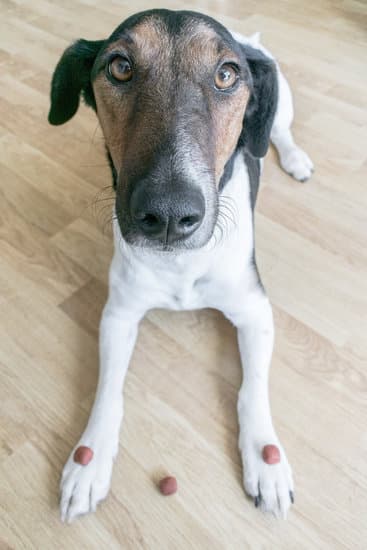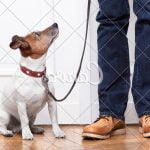Training your dog to use the bathroom outside is an essential part of responsible pet ownership. Not only does it prevent messes and odors inside your home, but it also ensures that your furry friend understands the proper place to relieve themselves. Housebreaking is one of the first and most fundamental training steps you’ll take with your new dog, and it sets the foundation for a well-behaved and hygienic canine companion.
Housebreaking not only benefits you as the owner, but it also promotes a healthier and happier life for your dog. By teaching them to eliminate outdoors, you’re preventing potential health issues that can arise from indoor accidents, such as bacterial infections or parasites. Additionally, a well-trained dog who knows where and when to go potty will experience less anxiety or confusion in unfamiliar environments.
Understanding the unique biological and behavioral needs of your dog is crucial when embarking on housebreaking training. Dogs naturally seek out consistency in their routines, so by providing them with clear expectations and setting up a designated outdoor bathroom area, you’re setting them up for success. Learning to identify your dog’s patterns and cues will also help you anticipate their needs and prevent accidents before they happen.
By implementing positive reinforcement techniques alongside a consistent routine and designating specific times for bathroom breaks, you’ll be well on your way to successfully training your dog to use the bathroom outside. With patience, persistence, and proper handling of accidents or setbacks along the way, you can establish a consistent bathroom routine that will benefit both you and your beloved four-legged companion for years to come.
Understanding Your Dog’s Bathroom Needs
One of the first steps in successfully housebreaking your dog is understanding their bathroom needs. Dogs have natural instincts to eliminate, but it is up to us as their owners to identify their patterns and cues. By doing so, we can effectively train them to use the bathroom outside rather than indoors.
Observe your dog’s behavior and look for signs that they need to go potty. Some common cues include pacing, sniffing the ground, circling in one spot, scratching at doors or windows, or suddenly becoming restless or anxious. Each dog may exhibit different signals, so it’s important to pay attention to your individual pet.
In addition to observing their behavior, it is also crucial to establish a routine for your dog. Dogs thrive on consistency and predictability, so providing them with a set schedule for bathroom breaks can help reinforce good habits. Take your dog outside first thing in the morning, after meals and playtime, before bedtime, and any time they display signs of needing to relieve themselves.
By identifying your dog’s patterns and cues, you will be better equipped to anticipate when they need to go potty and prevent accidents indoors. This knowledge will guide you in establishing a successful housebreaking routine for your furry friend.
Relevant data
| Dog Behavior | Cues for Needing Bathroom Breaks |
|---|---|
| Pacing | Sign that the dog needs to go potty |
| Sniffing the ground | Indication that the dog is searching for a spot to eliminate |
| Circling in one spot | Typical behavior before going to the bathroom |
| Scratching at doors or windows | Suggests that the dog needs to be let outside for a bathroom break |
| Restlessness or anxiety | Possible sign of needing to relieve themselves |
Setting Up a Designated Outdoor Bathroom Area
When it comes to housebreaking your dog, setting up a designated outdoor bathroom area is crucial. This helps your furry friend understand where they should go to relieve themselves and avoids confusion and accidents indoors. So, how do you select the right spot for your dog’s outdoor bathroom area?
- Location: Choose an easily accessible spot in your yard that is away from high-traffic areas where your dog can have some privacy. It should be a space that is easy for both you and your dog to get to quickly when necessary.
- Odor control: Look for an area with good airflow to minimize odors. Avoid places near windows or doors, as these smells may get into your home and attract your dog back inside.
- Surface: Consider the surface of the area. Dogs often prefer natural surfaces like grass or gravel, so if possible, choose an area with one of these options. However, if neither is available or practical for you, there are alternative options such as potty pads or fake grass patches that can be used.
Remember that every dog is different, so it may take some trial and error to find the perfect spot that meets their preferences and needs. Once you have chosen the right location, make sure to keep it clean by regularly picking up waste and disinfecting the area to maintain a hygienic environment for both you and your furry friend.
By selecting the right spot for your dog’s outdoor bathroom area, you will provide them with a consistent place to relieve themselves and promote effective housebreaking training.
Consistency is Key
One of the most important aspects of successfully training your dog to use the bathroom outside is establishing a consistent routine for bathroom breaks. Dogs thrive on routine and predictability, so by providing them with a routine for bathroom breaks, you are helping to set them up for success.
To establish a routine for bathroom breaks, it is important to first determine how often your dog needs to go outside. This will depend on factors such as their age, size, and overall health. Puppies, for example, may need to go outside more frequently than adult dogs. Once you have an idea of how often your dog needs to go outside, you can develop a schedule that accommodates their needs.
When establishing a routine, try to take your dog outside at the same times each day. This can be particularly helpful in preventing accidents and teaching your dog when bathroom breaks are expected. For example, you might choose to take your dog outside first thing in the morning, after meals, before bedtime, and at regular intervals throughout the day.
In addition to establishing set times for bathroom breaks, it is also important to be consistent in how you take your dog outside. Use the same door or exit point each time and follow a consistent path to the designated outdoor bathroom area. By doing this, you are helping your dog develop cues and associations that signal it’s time to go potty.
Consistency is key in all aspects of training your dog, but it is especially important when it comes to establishing a routine for bathroom breaks. By providing consistency and predictability in when and how you take your dog outside, you will be setting them up for success in learning where they should do their business.
| Aspect | Details |
|---|---|
| Routine | Establish a consistent schedule for taking your dog outside |
| Times | Determine how often your dog needs to go outside based on their age, size, and health |
| Consistency | Use the same door or exit point each time and follow a consistent path to the designated outdoor bathroom area |
Positive Reinforcement Techniques
One of the most effective ways to train your dog to use the bathroom outside is through positive reinforcement techniques. By rewarding your dog for using the bathroom in the appropriate area, you will reinforce this behavior and encourage them to continue doing so. Here are some tips on how to effectively reward your dog for using the bathroom outside:
Use treats
Using treats as a reward can be highly motivating for dogs. Choose small, tasty treats that your dog loves and keep them readily available during bathroom breaks. When your dog finishes going to the bathroom outside, immediately give them a treat and offer praise. This will associate going to the bathroom in that specific area with something positive.
Provide verbal praise
Alongside treats, verbal praise is an important aspect of positive reinforcement training. Dogs thrive on their owner’s approval, so make sure to shower them with verbal praise whenever they successfully use the bathroom outside. Use a happy and enthusiastic tone of voice to let your dog know that they have done something right.
Offer physical affection
In addition to treats and verbal praise, physical affection can also be a powerful reward for dogs. After your dog has completed their business outside, give them a gentle pat or scratch behind their ears as a way of showing affection. This will strengthen the bond between you and your furry friend while reinforcing their good behavior.
Remember that timing is crucial when it comes to rewarding your dog for using the bathroom outside. The reward should be given immediately after they finish so that they understand what they are being rewarded for. By consistently using positive reinforcement techniques, you will make it clear to your dog what is expected of them and increase the likelihood of success in housebreaking training.
Proper Timing
Picking the right timing for bathroom breaks is crucial when it comes to successfully training your dog to use the bathroom outside. Dogs, just like humans, have regular bathroom needs that are influenced by their biological patterns and routines. By understanding your dog’s natural schedule and learning to identify cues, you can establish a consistent routine that aligns with their needs.
One effective way to determine the ideal times for bathroom breaks is by observing your dog’s behavior and paying attention to their signals. Dogs often show signs of needing to go potty, such as sniffing the ground, circling an area, or whining.
These behaviors can serve as cues for you to take them outside promptly. Additionally, it’s important to consider certain times that are typically associated with higher chances of needing to use the bathroom, such as after meals or naps.
To help you keep track of your dog’s bathroom habits and identify patterns, creating a log or using a note-taking app can be beneficial. Note down the times when your dog goes potty so you can start recognizing regular intervals between their breaks. This will enable you to plan ahead and sync their bathroom routine with yours.
In addition to understanding your dog’s individual needs and cues, it is also important to establish a consistent schedule for bathroom breaks throughout the day. By having set times for these breaks, you are helping your dog develop a sense of predictability and stability in their routine. This consistency helps reinforce their understanding that they should wait until they are outside before relieving themselves.
Here is an example of a daily routine that incorporates proper timing:
Morning:
- Take your dog outside immediately upon waking up.
- Allow them enough time (around 10-15 minutes) to relieve themselves.
After Breakfast:
- Take another outdoor break within 30 minutes after they have finished eating.
- Give them ample time (around 10-15 minutes) to go potty.
Afternoon:
- Plan a bathroom break during the mid-afternoon, typically 2-4 hours after their last outing.
- Offer around 10-15 minutes for them to use the bathroom outside.
Evening:
- Take your dog out again in the evening, approximately 30 minutes after their dinner.
- Provide sufficient time (around 10-15 minutes) for them to go potty before settling in for the night.
By following an established routine with proper timing, you increase the likelihood of your dog successfully using the bathroom outside. Remember that each dog is unique, and it may take some time to fine-tune their schedule. With patience, consistency, and regular observation of their cues, you will create a solid foundation for housebreaking your dog and maintaining a healthy bathroom routine.
Addressing Accidents
Understanding the Nature of Accidents
Accidents are an inevitable part of the housebreaking process, especially when training a new puppy. It is important to understand that accidents happen for a variety of reasons, including the dog’s age, breed, health issues, or even lack of understanding about where they should go to the bathroom. Before addressing accidents, it is crucial to approach them with patience and understanding.
Cleaning Up Accidents
When accidents occur indoors, it is crucial to clean up the mess promptly and effectively. Start by blotting any urine or picking up solid waste using disposable gloves and paper towels. Avoid rubbing the area as it may spread bacteria and cause a lingering odor. Once most of the mess has been cleaned up, use an enzymatic cleaner specifically designed for pet stains and odors to eliminate any remaining smells that might attract your dog back to that spot.
Refrain from Punishing Your Dog
It is essential not to scold or punish your dog when accidents happen indoors. This will only confuse and scare them, possibly leading to anxiety-related behavioral problems. Instead, focus on redirecting their behavior towards the correct bathroom area outside by providing positive reinforcement during successful outdoor bathroom breaks.
Preventing Future Accidents
One way to prevent future accidents is by closely monitoring your dog’s behavior patterns and cues. Keep a record of when accidents tend to happen and look for recurring signs such as circling or sniffing around a specific area before eliminating indoors. By identifying these patterns, you can anticipate when your dog needs a bathroom break and take them outside in time.
Using Crate Training
Crate training can be an effective tool in preventing indoor accidents during housebreaking. Dogs naturally avoid soiling their sleeping area; therefore, confining them in a crate when you’re unable to supervise them helps promote bladder and bowel control. Make sure the crate is appropriately sized so that your dog can stand, turn around, and lie down comfortably. Gradually increase the time your dog spends in the crate, always ensuring they have regular bathroom breaks.
Seeking Professional Help
If you find that accidents continue to occur despite consistent training efforts, it may be helpful to seek professional assistance from a certified dog trainer or behaviorist. They can assess your specific situation and provide additional guidance tailored to your dog’s individual needs.
By understanding accidents as a normal part of the housebreaking process, implementing proper cleaning techniques, avoiding punishment, and monitoring your dog’s behavior closely, you can effectively address indoor mishaps and facilitate successful housebreaking.
Patience and Persistence
Dealing with setbacks and training challenges can be frustrating, but it is important to approach these situations with patience and persistence. Just like humans, dogs are not perfect and may have accidents or struggle with learning new behaviors. By understanding how to navigate setbacks and challenges, you can continue to make progress in housebreaking your dog.
One common setback in housebreaking is when a dog starts having accidents after initially showing progress. This can happen for various reasons such as changes in routine, illness, or stress. It is important not to get discouraged during these times. Instead, go back to the basics of establishing a routine and closely monitoring your dog’s bathroom breaks. Provide plenty of opportunities for them to go outside and reward them when they use the designated area appropriately.
Another challenge that owners often face is when their dog refuses to eliminate outside or shows fear or anxiety about going outdoors. In these cases, it is essential to address any underlying issues that may be causing the reluctance. Consult with a veterinarian or professional dog trainer who can help identify and address the root cause of this behavior. Be patient with your dog throughout this process and provide positive reinforcement when they make small steps towards progress.
Persistence is key when it comes to overcoming setbacks and challenges in training your dog to use the bathroom outside. Consistency in your approach and expectations will help your furry friend understand what is expected of them. Remember to keep accidents out of sight from your dog – scolding or punishing them for accidents will only confuse them further.
By remaining patient and persistent during setbacks and training challenges, you will be able to overcome obstacles more effectively. With time, effort, and positive reinforcement, you will establish a consistent bathroom routine for your dog while maintaining a clean indoor environment for everyone’s benefit.
Long-Term Maintenance
Once your dog is successfully housebroken and consistently using the bathroom outside, it’s important to establish a long-term maintenance routine to ensure that this behavior becomes a lifelong habit. Consistency and perseverance are key in maintaining your dog’s bathroom routine, so here are some tips to help you maintain success.
Firstly, continue to stick to the established schedule for bathroom breaks. Dogs thrive on routine, so make sure you are taking them out at the same times every day. This includes first thing in the morning, after meals, before bedtime, and any other regular intervals throughout the day. By maintaining a consistent schedule, your dog will learn when it’s time to go outside and will be less likely to have accidents indoors.
In addition to keeping a set schedule for bathroom breaks, it’s important to monitor your dog’s behavior closely. Look for signs that they may need to go outside such as sniffing or circling around a particular area, restlessness, or sudden changes in behavior. If you notice any of these cues, take your dog out immediately. By being attentive and responsive to their needs, you can prevent accidents from occurring.
Another important aspect of long-term maintenance is properly cleaning up any accidents that do happen indoors. Accidents may occur occasionally even with a well-trained dog, so it’s crucial to clean up promptly and thoroughly using an enzyme-based cleaner specifically designed for pet messes. This helps eliminate any lingering scent that may attract your dog back to the same spot.
Lastly, remember that patience and persistence are crucial during this long-term maintenance phase. Even if setbacks occur or if your dog has occasional accidents indoors, remain calm and consistent in your training methods. Continue praising and rewarding your dog for going outside while avoiding punishment for accidents inside the house. With time and consistency, maintaining a consistent bathroom routine will become second nature for both you and your dog.
By following these tips and maintaining a consistent bathroom routine, you can ensure that your dog continues to use the bathroom outside for the long term. With patience and persistence, you’ll be able to celebrate your dog’s success and enjoy a clean indoor environment.
Conclusion
In conclusion, by following the steps outlined in this article, you can successfully train your dog to use the bathroom outside and enjoy a clean indoor environment. Housebreaking your dog is an important process that requires patience, consistency, and positive reinforcement. Understanding your dog’s bathroom needs, setting up a designated outdoor area, and establishing a routine for bathroom breaks are all crucial steps in the training process.
Consistency is key when it comes to training your dog to use the bathroom outside. By sticking to a regular schedule for bathroom breaks and using positive reinforcement techniques to reward your dog for successful outdoor bathroom trips, you can reinforce the desired behavior. It is also important to pick the ideal times for bathroom breaks based on your dog’s individual needs and patterns.
Addressing accidents appropriately is also an important aspect of housebreaking. It is essential not to punish or scold your dog for accidents, as this can lead to confusion and setbacks in their training progress. Instead, focus on redirecting their behavior towards the designated outdoor area and providing plenty of praise and rewards when they use it correctly.
Remember that training your dog to consistently use the bathroom outside will require patience and persistence. Setbacks may occur along the way, but with a calm and consistent approach, you can overcome these challenges. Celebrate every success along the journey and continue maintaining a consistent bathroom routine for your dog.
By putting in the time and effort to train your dog properly, you can create a harmonious living environment where both you and your furry friend can enjoy cleanliness indoors. So stay committed to the process, be patient with any setbacks that may arise, and before long, you’ll be celebrating your dog’s success in using the bathroom outside while enjoying a clean home environment together.
Frequently Asked Questions
How to train your dog to pee outside?
Training a dog to pee outside involves consistency, patience, and positive reinforcement. Start by establishing a designated spot in your yard where you want your dog to eliminate. Take your dog out at regular intervals, especially after meals, playtime, or naps. Use a consistent command like “go potty” or “do your business” to associate with the behavior.
When your dog eliminates in the desired spot, praise and reward them with treats or verbal praise immediately. If accidents happen indoors, clean them up without punishment and reinforce the importance of going outside. Over time, your dog will learn to associate the outdoor area with bathroom breaks.
How long does it take to train a dog to use the bathroom outside?
The time it takes to train a dog to use the bathroom outside can vary depending on various factors such as the age of the dog, their previous training history, and their individual personality. Typically, it may take several weeks or even a few months for consistent success. Young puppies may have less control over their bladder and require more frequent trips outside compared to older dogs.
Consistency is key during this process – stick to a routine of taking your dog out regularly and reinforcing good behavior consistently. Remember that every dog learns at their own pace, so be patient and celebrate small victories along the way.
How do you get my dog to poop when I take him outside?
To encourage your dog to poop when taken outside, it’s important to recognize their individual signals and cues related to elimination needs. Pay attention to signs such as circling or sniffing around before squatting as these indicate that they are getting ready to go. Establish a regular schedule for outdoor bathroom breaks that aligns with their typical elimination patterns (e.g., after meals).
Take them out for walks or allow them ample time in an appropriate outdoor area where they can feel comfortable relieving themselves without feeling rushed or distracted by other stimuli. Stick to consistent commands like “go poop” or “do your business,” and provide plenty of praise and rewards when they successfully eliminate outside.

Welcome to the blog! I am a professional dog trainer and have been working with dogs for many years. In this blog, I will be discussing various topics related to dog training, including tips, tricks, and advice. I hope you find this information helpful and informative. Thanks for reading!





